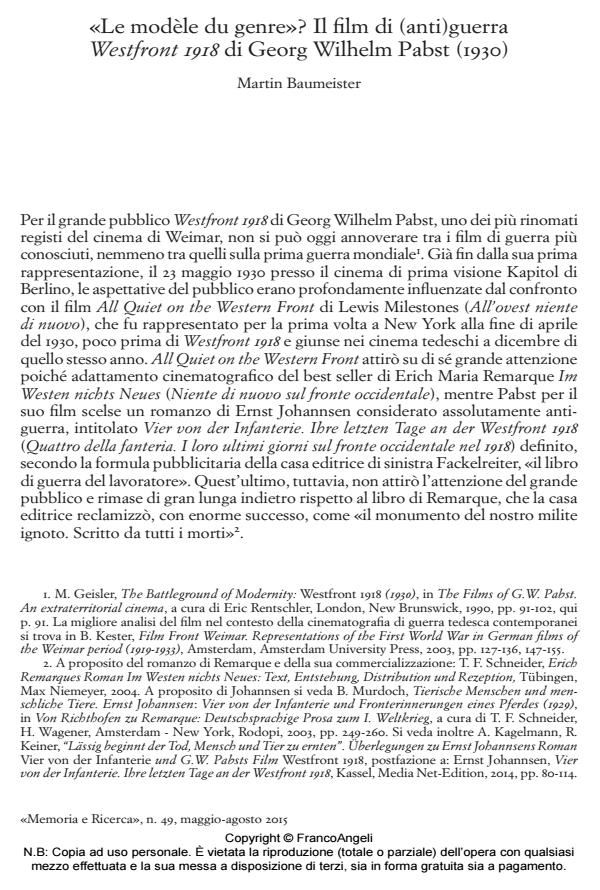«Le modèle du genre»? Il film di (anti)guerra Westfront 1918 di Georg Wilhelm Pabst (1930)
Titolo Rivista MEMORIA E RICERCA
Autori/Curatori Martin Baumeister
Anno di pubblicazione 2015 Fascicolo 2015/49
Lingua Italiano Numero pagine 14 P. 29-42 Dimensione file 184 KB
DOI 10.3280/MER2015-049003
Il DOI è il codice a barre della proprietà intellettuale: per saperne di più
clicca qui
Qui sotto puoi vedere in anteprima la prima pagina di questo articolo.
Se questo articolo ti interessa, lo puoi acquistare (e scaricare in formato pdf) seguendo le facili indicazioni per acquistare il download credit. Acquista Download Credits per scaricare questo Articolo in formato PDF

FrancoAngeli è membro della Publishers International Linking Association, Inc (PILA)associazione indipendente e non profit per facilitare (attraverso i servizi tecnologici implementati da CrossRef.org) l’accesso degli studiosi ai contenuti digitali nelle pubblicazioni professionali e scientifiche
The article deals with Westfront 1918, one of the first German sound films and the most important German film about World War One, released in 1930, an adaptation of an anti-war novel by Ernst Johannsen by one of the most prominent directors of Weimar cinema, G.W. Pabst. The film is analyzed in the context of media representations of the war, which rapresented a crucial element of public memory and a central factor in defining the political meanings of the war in postwar societies. The paper discusses the structure of the film plot, its reception in the German and international press and finally the film’s relationship with Johannsen’s novel as well as with its much better known American counterpart, All Quiet on the Western Front, released almost simultaneously with Pabst’s film. For its aesthetic achievements, and for the debate it caused about the political ambivalences of media "war realism", Westfront 1918 merits to be reconsidered with regard to the "canon".
Parole chiave:Weimar cinema; Georg W. Pabst; Ernst Johannsen; war realism.
Martin Baumeister, «Le modèle du genre»? Il film di (anti)guerra Westfront 1918 di Georg Wilhelm Pabst (1930) in "MEMORIA E RICERCA " 49/2015, pp 29-42, DOI: 10.3280/MER2015-049003